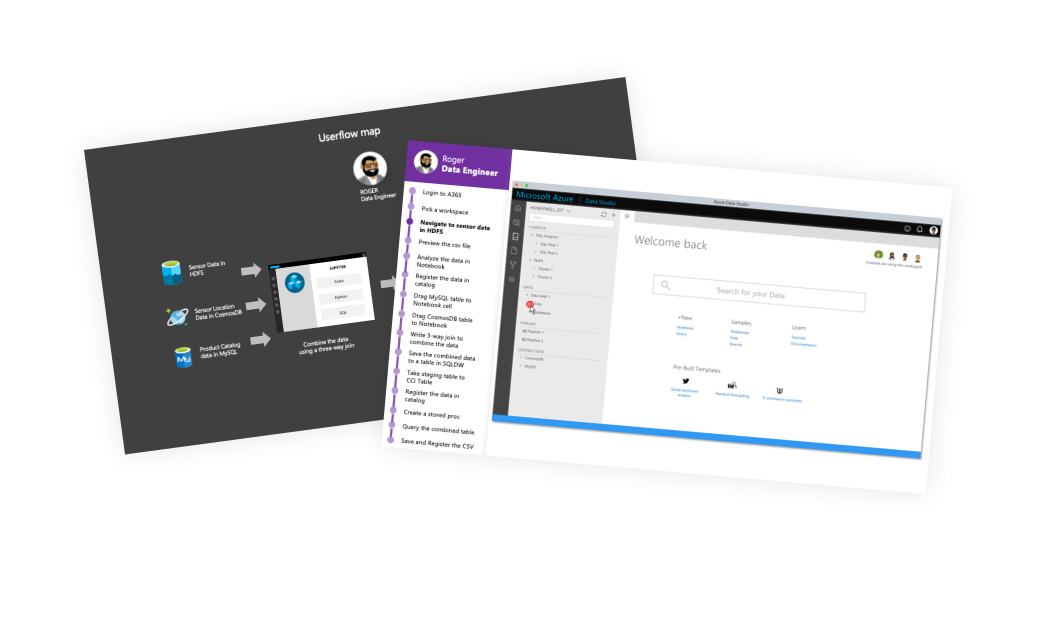Azure Synapse Analytics
Azure Synapse is an evolution of Microsoft’s Data Warehouse service, designed to bring together data warehousing, Spark data science, and data integration capabilities under a unified analytics stack.
How we owned the problem
Working closely with partners in program management and engineering, my team of designers and researchers created a clear picture of customer needs and communicated with the executive leadership team the problems we identified and our proposal for solving them.
KANO & CVT
We conducted interviews with over 900 data warehousing professionals and tested concepts to land on our approach.
Story Flow
Our user journey documentation helped provide clarity on how customers would interact with a range of capabilities.
Leverage Existing Tech
We decided to leverage existing tech stacks for much of the infrastructure and experience.
Unify the best capabilities
SQL
Support existing structured SQL data warehousing work
Spark
Enable new workloads on unstructured data and data science with Spark
Data Integration
Provide end-to-end data integration and orchestration with ADF pipelines
Monitoring
Enable visibility for data estate infrastructure to manage loads
The benefits
and challenges
of unification.
Creating a unified UX framework for would allow us to be more efficient in our design process and allow partner teams to design experiences in an extensible manner.
But our ecosystem requires accounting for alignment with the Azure design system, multiple codebases in both Angular and React, and PM and Engineering teams spread across multiple company divisions.
Balance multiple
frameworks
Synapse is a web application built on Azure – but it’s not an Azure platform experience and shares no codebase.
Respect conventions
When addressing customer needs try to be mindful of the skills and expectations they are coming with.
Build support from engineers
A fundamental of a design system is to make it easier to build consistent experiences.
Synapse Framework
We started from an existing “shell” experience which helped leverage existing capabilities.
Original framework in Data Factory
Synapse Analytics built on Data Factory framework
From our shell we architected an extension model which allowed partner teams to build experiences that enhanced the product but leveraged common infrastructure.
Application Regions
Our UX framework documented common patterns in the experience which helped partner teams design consistent experiences.
Display Types
Synapse relies on several display types to support focused interactions in authoring, monitoring, and management.
Document Types
Command & Control
Synapse Framework:
Outcomes & Learnings
Angular + React
It’s important to make sure everyone is aware of the “tax” associated with maintaining two frameworks in code. In the long-run it’s expensive.
Balance Consistency
Not all ”consistency” problems are created equal. You can invest a lot of energy in solving problems that aren’t really problems for customers.
Decouple Dependencies
The more dependencies you sign up for the slower you will move. Be strategic about what you’re building into the dependency chain.












